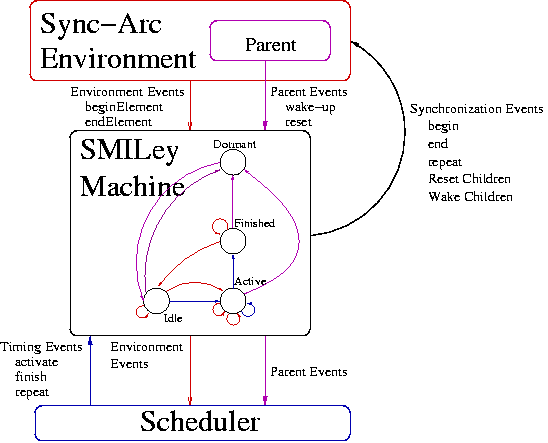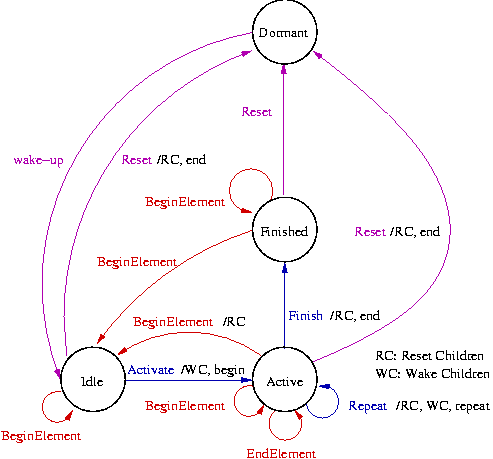- From: Jennifer L. Beckham <beckham@research.att.com>
- Date: Wed, 31 May 2000 11:59:04 -0400
- To: "smil" <www-smil@w3.org>
- Cc: "Nils Klarlund" <klarlund@research.att.com>
- Message-ID: <FDELIFAEDLILEIJDJLJOOEEECAAA.beckham@research.att.com>
hello SMIL people: Here at AT&T Research, we've been looking at SMIL as a way of handling timing constraints for speech applications. The orthogonal time containers (par, seq, and excl) within SMIL’s Timing and Synchronization Module provide us with a good foundation for developing intricate speech-aware multimedia systems. We're working from a programming language point of view and have started on a formal semantics for SMIL’s Timing Module. Part of our process involves gaining a understanding of the states and transitions for a given time container. We found the section titled “State Transition Model” in the Timing Module working draft helpful, but also a bit confusing. Our greatest struggle was in matching up the state diagram for an element with the informal semantics in the draft. In particular, the diagram does not very clearly explain relationships with parent containers, synchronization with other elements, and the evolving SMIL event model. So, we've tried to define an event flow and state machine semantics for SMIL. We try to elucidate the timing and the scheduling properties of elements by separating the sync-arc relationships of elements from the activation and playing of an element. Our work is summarized in the attached html document. Basically, we wanted to turn the state diagram into something that precisely explains fundamental parts of SMIL. For this reason, we are using a simple event oriented model, where the state diagram is a Mealy machine that define fundamental concepts such as durations. We would be very happy to receive comments on the model; have we understood SMIL? Thank you, Jennifer L. Beckham Nils Klarlund
Attachments
- image/gif attachment: interaction.gif

- image/gif attachment: state.gif

- text/html attachment: SMILey.html
Received on Wednesday, 31 May 2000 12:00:19 UTC